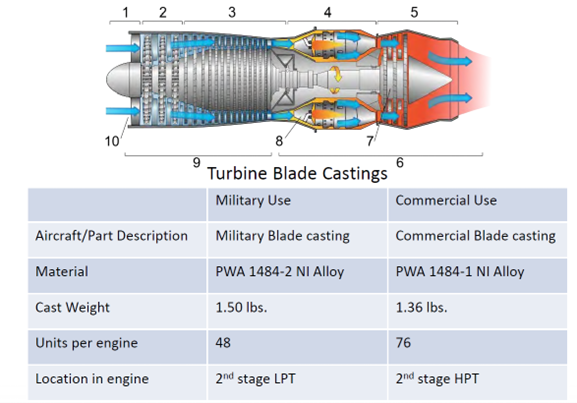Is What I am Buying (or Selling) Commercial?
It is a common misconception that because you are selling to the U.S. Government, whatever you are selling (or buying) can’t possibly be “commercial”. Au Contraire!
The U.S. Government expects contractors to provide commercial products or services as part of their solution to a solicitation. FAR 52.244-6(b) states, “To the maximum extent practicable, the Contractor shall incorporate, and require its subcontractors at all tiers to incorporate, commercial products, commercial services, or non-developmental items as components of items to be supplied under [a] contract.” (Emphasis added).
SpendLogic believes it is important for contractors to understand commerciality as it relates to government contracting. This article is written from the perspective of a prime contractor procuring items from a supplier/subcontractor. This multi-part article is to help understand the process of making a determination of commerciality on what is being purchased from the supplier/subcontractor.
How Do You Know?
How does a Buyer know if what they are procuring is “Commercial”? To know, one must first understand what a Commercial Product (or service) is. As with most government regulations, you may find a definition or a requirement with which you must comply, but you will not find a step-by-step guide on HOW to prove (determine) the item is commercial. SpendLogic’s Commerciality tool is an automated step-by-step guide that guides you through the HOW and will generate your determination ensuring you have included all the necessary backup and other information to support your determination. Your vendor may assert that what they are selling you is commercial, but it is the prime contractor who has the requirement to determine it to be commercial in accordance with definition at FAR 2.101. This requirement is prescribed in DFARS 244.402(a), and it is during a purchasing system review (CPSR), that the adequacy of that determination is assessed. Common findings for Commercial Determinations during a CPSR include:
- Lack of ANY commercial determination.
- Lack of, or missing, market research.
- Described only similarities to other products and not differences.
- Utilizing the vendor’s assertion as the determination.
- Lack of documentation to support determination.
What is a Commercial Product?
A Commercial Product is defined in FAR 2.101. Follow the link to review each element in the definition.
Making a Determination of Commerciality
One must determine which specific commercial definition paragraph in FAR 2.101 will be used to support the determination. This is critical because the documentation and analysis to support each element of the definition varies. Evidence can be in the form of:
- Prior FAR Part 12 Prime contract award 1
- Commercial catalogs
- Does the general public have access?
- Is pricing transparent or do you have a “request a quote”?
- Can you add the item to your cart and purchase?
- Commercial Sales Data 2
- Invoices (a single sale or a few sales over a period of time does not necessarily meet the requirements in the definition)
- Side-by-Side comparison to other commercial products
SpendLogic’s Commerciality tool uses the TurboTax-like approach when selecting the element in the FAR 2.101 definition to guide you through the remainder of your determination. Depending on which element you choose, the tool will guide you through the remainder of your determination to ask for relevant and supporting information.
Step 1 | Describe the Product
You should be prepared to describe the essential characteristics of the product – FORM, FIT, and FUNCTION. These terms are not found the Commercial Product definition, but they are relevant in your analysis.
FORM: Describe the physical characteristics of the product, e.g. shape, size, dimensions, mass, weight, material, etc. Modifications to a “commercial” product can impact a determination of commerciality if the modifications are “significant” and have an impact on pricing. The example demonstrate how items can have the same Function but take a different Form.
FIT: Describe how the product aligns or interfaces with other components or systems without a need for further adaptation or modification. If modifications are necessary, what are they? Describe how the product is installed. Describe any specific tolerances or connection requirements.
FUNCTION: Describe the operational capabilities of the product. What does the product do? How does it perform its intended task?
Step 2 | COMPARE the proposed product to one in the commercial marketplace.
If you compare the proposed product to one available in the commercial marketplace, describe both the similarities and differences. Below is an example of how to demonstrate the similarities and differences between a proposed product and a commercial product “of a type”.

STEP 3 | SHOW Commercial End Use
Within the FAR 2.101 definitions of Commercial Product and Commercial Service you will see customarily used by the general public or by nongovernmental entities for purposes other than governmental purposes or sold or offered for sale to the general public.Your determination must substantiate that the product being procured, or the product being used for comparison, has a commercial end use application. In the image above, one can show that turbine engines are used on commercial aircraft, e.g., commercial airlines, private jets, etc. This can be demonstrated in narrative form, technical data, information and photos from websites, etc.
Let SpendLogic help you with the daunting task of making a determination of commerciality. Schedule your 15-minute, no obligation demonstration.
——————————————–
1 NOTE: This only applies to the Prime contractor under a FAR Part 12 contract and not to lower tier suppliers/subcontractors.
2 Selling your product to another company where the end-user is the government is not a commercial sale.




 SpendFile Documentation Folders
SpendFile Documentation Folders